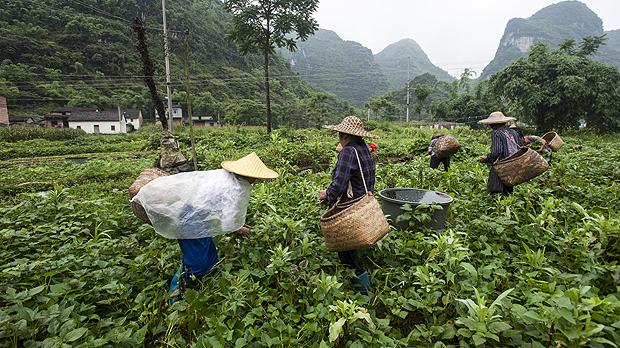In a remarkable shift of national priorities, China has embarked on an ambitious journey toward agricultural self-sufficiency. President Xi Jinping has designated food security as “guozhi dazhe”—a top national priority—signaling Beijing’s determination to secure the country’s food supply independently. The government isn’t merely talking; concrete actions follow rhetoric.As 2021, Chinese authorities have reclaimed more than 170,000 hectares of land specifically for grain production, reversing previous environmental policies that had returned farmland to forest.
China’s Ministry of Agriculture and Rural Affairs recently unveiled a strategic plan extending through 2028 that identifies ten critical areas requiring immediate attention. Biotechnology stands prominent among these priorities. So does artificial intelligence. The breeding of new agricultural varieties complements efforts to improve arable land quality, while innovative machinery growth supports the broader technological ecosystem. These initiatives serve a singular purpose: ensuring food security for China’s population exceeding 1.4 billion without relying on volatile international supply chains.
The results speak volumes already. Last year marked a milestone when China’s grain output surpassed 7 billion metric tonnes for the first time—an achievement officials attribute substantially to technological innovations in the agricultural sector.
Strategic Targets and Planning
China has established specific production targets that reflect its self-sufficiency ambitions. The current Five-Year Agricultural Plan aims for annual grain production exceeding 770 million tons. Additionally, domestic soybean production is targeted to reach 23 million tons by 2025. These goals aren’t arbitrary; thay represent calculated steps toward reducing import dependence amid increasing global trade uncertainties.
Looking further ahead, the Ministry of Agriculture and Rural Affairs has announced even more ambitious objectives. they plan to increase annual grain production by 50 million metric tons by 2030—representing a 7 percent increase—while maintaining over 117 million hectares of farmland dedicated exclusively to grain cultivation. This agricultural expansion occurs alongside strict protection measures for existing farmland.
china’s “No.1 Central Document” for 2023—the annual manifesto on state agricultural policy—introduced another pivotal goal.for the first time, it explicitly articulated the nation’s aspiration to become an agricultural power. Chinese officials and scholars emphasize that the core concept behind building “agricultural power” centers on boosting grain self-sufficiency. This represents a essential strategic reorientation in national development priorities.
Technological Innovation at the Forefront
Agricultural technology constitutes the central pillar of China’s food security strategy. The country plans to accelerate research and submission of advanced, domestically produced agricultural machinery and smart farming systems. These include applications of artificial intelligence, 5G connectivity, big data analytics, and low-altitude systems—all aimed at enhancing efficiency across the agricultural sector.
To facilitate technological advancement, China aims to establish 500 national-level agricultural industrialization consortiums by 2025. These organizations will create collaborative ecosystems bringing together research institutions, agribusinesses, and farmers. Their focus encompasses drought-resistant crops,smart machinery,and sustainable farming practices adapted to China’s diverse growing conditions.
The ministry has characterized the current moment as the dawn of a new agricultural technology revolution. They believe that transformations driven by biotechnology and facts technology stand on the verge of important breakthroughs that could fundamentally alter agricultural productivity.
An article by a ministry official in the Communist Party’s Qiushi Journal recently observed: “In today’s world, scientific and technological innovation has become the main battlefield of international strategic competition, with an unprecedentedly fierce race for technological dominance.” This framing positions agricultural self-sufficiency not merely as an economic objective but as a component of broader technological competition with global powers.
Seed technology receives particular attention within China’s agricultural strategy. President Xi specifically promised “strong support in agricultural research and development, notably seed technology,” recognizing seeds as the foundational element of agricultural independence. China’s push for self-sufficiency in this area reflects concerns about seed technologies largely originating from Western companies.
Recent global developments—including Russia’s withdrawal from the Black Sea Grain Initiative and India’s restrictions on rice exports—have only reinforced Chinese leadership’s conviction that food security must remain “firmly in its own hands.” As global food systems face mounting pressures, China’s agricultural self-sufficiency drive increasingly appears less a matter of preference and more one of necessity in an uncertain world.









